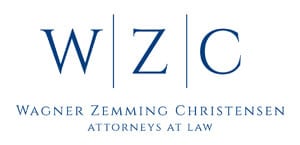4 Common Provisions You Should Include in a California Commercial Lease

Leasing a commercial space is not the same thing as renting an apartment. While residential leases are often boilerplate documents drafted by the landlord, a good commercial lease is tailored to the specific needs of both the landlord and the tenant. Every commercial lease needs to spell out the duties, obligations, and rights of both sides, and anticipate the need to resolve any disputes that may arise in the course of the business relationship.
With that in mind, here are four subjects that every commercial lease needs to clearly address:
-
Rent
This is obviously the first topic on everyone’s mind when it comes to signing a lease. With commercial properties, it is common practice to calculate the base rent according to the square footage of the lease space. The parties also need to agree whether to follow a “net” or “gross” lease model. With a net lease, the tenant usually pays property taxes and additional operating expenses as part of the rent, which can fluctuate over time. A gross lease, in contrast, provides for a fixed, flat payment each month, with the landlord paying taxes and other expenses.
-
Maintenance and Repairs
This is perhaps the most common source of conflict between tenants and landlords: Who is responsible for maintenance or making repairs to the property? Typically it is the responsibility of the tenant to maintain their own premises. So if the tenant wants the landlord to assume some or all of that responsibility, it needs to be incorporated into the written lease. Any maintenance or repair provision should also cover what type of notice the tenant needs to give and what consequences, if any, there are for failure by either side to fulfill their maintenance and repair obligations.
-
Usage of the Property
A commercial lease can use fairly broad language when it comes to permitted use of the premises–i.e., the tenant can be used for “any lawful purpose.” So if you are the landlord and want to restrict the tenant’s activities to certain businesses or uses, you need to get such limitations in writing. And if you are a prospective tenant, you need to carefully review the lease beforehand to see if there are any terms that might infringe upon your business.
In some cases, a tenant may also want to negotiate an “exclusive use” clause into their lease. For instance, say you have just leased a space in a strip mall to build and operate a Mexican restaurant. You may want your lease to include the landlord’s guarantee they will not lease any other space in that same strip mall to another Mexican restaurant.
-
Hedging Against Risks
A commercial lease also normally contains a casualty provision that basically hedges against certain risks. For instance, what happens if the leased property is damaged by an earthquake and becomes unusable? A casualty provision can spell out who is responsible for any damages, as well as providing the tenant with the right to terminate the lease or seek an abatement of rent while they are unable to keep their doors open.
Speak with a Southern California Lease Litigation Attorney Today
Even the best drafted lease is no guarantee that there will not be a disagreement, or possible litigation, between a landlord and tenant. If you are involved in a commercial leasing dispute and need advice and representation from a qualified Riverside, California, business attorney, contact Wagner Zemming Christensen, LLP, today to schedule a consultation.
